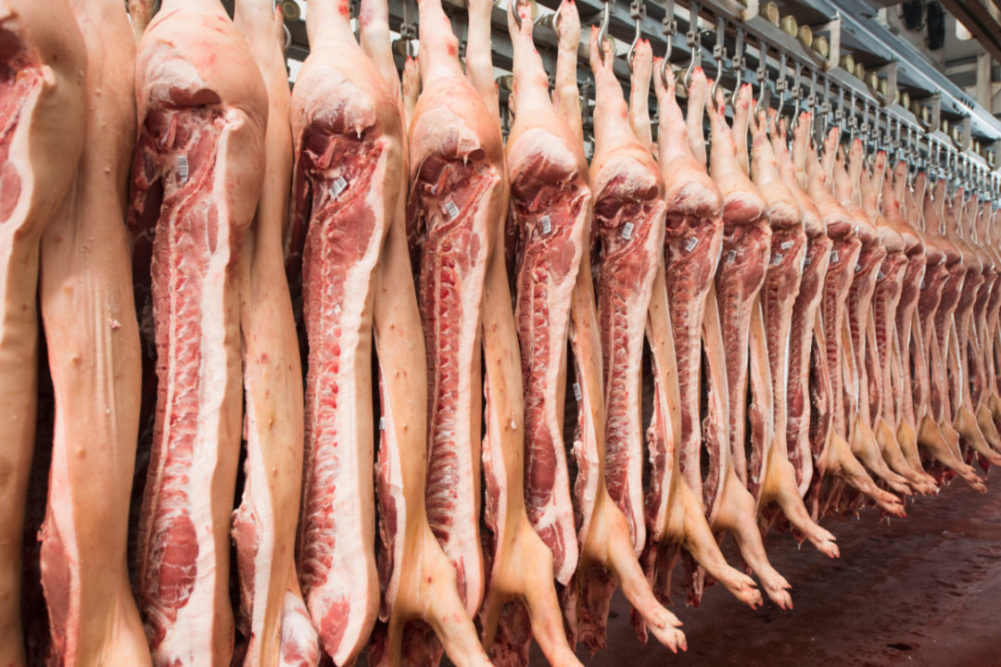DENVER – China has started rebuilding its hog herd, which means the strong trade flows US pork producers have enjoyed will be slowing over the next three to five years, Will Sawyer, lead economist at Denver-based CoBank, said in a recent market analysis called, “US Pork Export Outlook: How to Save Our Own Bacon as China Rebuilds.”
Before the outbreak of African swine fever destroyed an estimated two-thirds of China’s swine herd, US exports of pork to greater China accounted for 2% of US pork production. Greater China now accounts for nearly 8% of US pork production and one-third of all US pork exports, according to the report. The United States has attracted more international buyers for pork and expansion of processing capacity — the US pork industry grew packing capacity by 12% — over the past four years has kept up with demand. However, as the US pork sector has grown, so have exports driven by shipments to China, and this growth has made the US pork industry more reliant on Chinese demand.
China’s pork production is expected to recover in the next three to five years, and there are signs that a recovery is getting started, Sawyer said in the report.
“Official Chinese government data indicates growth in their hog herd and breeding herd versus prior year levels. Some market participants look at these numbers with skepticism, but we are starting to see the ‘green shoots’ of the rebuilding of China’s hog herd,” the report said. “These signs include billions of dollars of Chinese investments in large-scale production over the last couple of years, diminishing national and provincial subsidies and incentives for hog producers, and hog prices that have declined almost 25% in the last three months.”
Sawyer offered strategies to implement now that could help producers mitigate the impact of lower pork exports to China further down the road. For example: Pork producers should shift the trade relationship from transactional to strategic. Sawyer said US packers have avenues “…to strengthen relationships they have with importers of their end products.” Such relationships will help them fare better during a down cycle.
Relationships between producers and packers also will become crucial. A lesson learned from the impact of the coronavirus (COVID-19) pandemic is that producers who had deep and strategic relationships with their packer fared far better during the plant shutdowns and slowdowns in April and May.
Next, efforts to expand markets for US pork products are imperative.
“Markets like Japan, Korea and Mexico are critical, making trade agreements like the US/Japan Trade Agreement and the USMCA vital for the US pork sector to retain and grow exports,” Sawyer said in the outlook report. “But the US pork sector has great export opportunities in numerous smaller markets, especially in the Caribbean, Central and South America.”
However, the industry shouldn’t neglect the domestic market, Sawyer said in the report.
“The National Pork Board has many initiatives to improve pork consumption, as described in “Time to Tango: Latinos are Pork’s Future,” he said. “This group represents nearly 20% of the US population and has the potential to help offset the losses of reduced Chinese purchases.”
Finally, producers should use benchmarking data to identify and address weak points in their operations.
And if all else fails, Sawyer said, liquidity in the US pork sector could help some producers and processors through a difficult down cycle.
“Margins for producers have been reasonable the last five years, but producers’ operations – and their balance sheets – have expanded in sync with the new processing plants,” Sawyer said in his analysis. “Now that producer margins average a loss of nearly $10 per head in 2020 on an unhedged basis, liquidity takes on even greater importance.”


